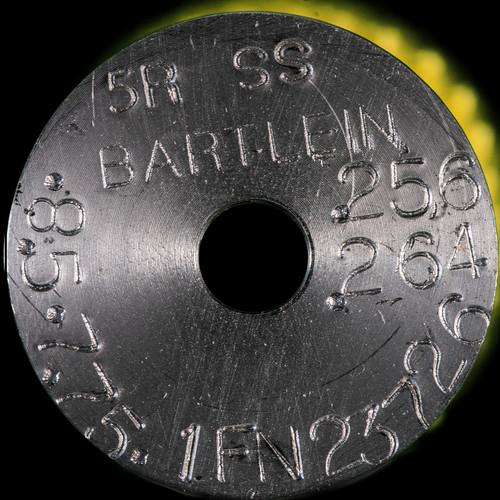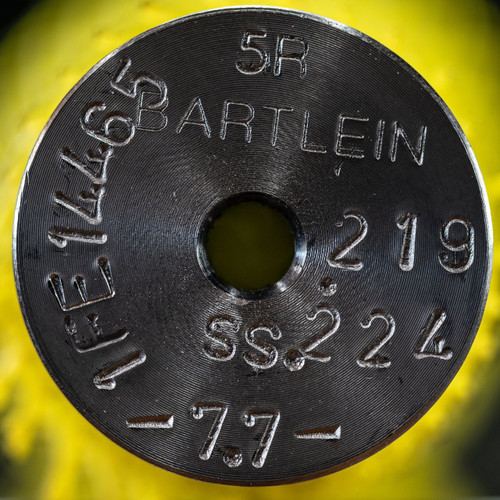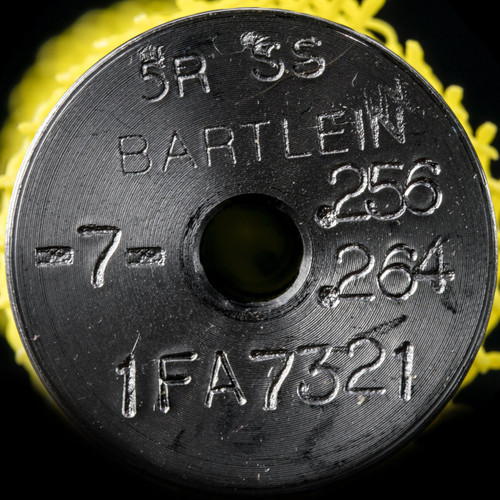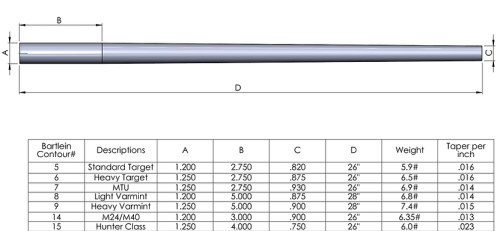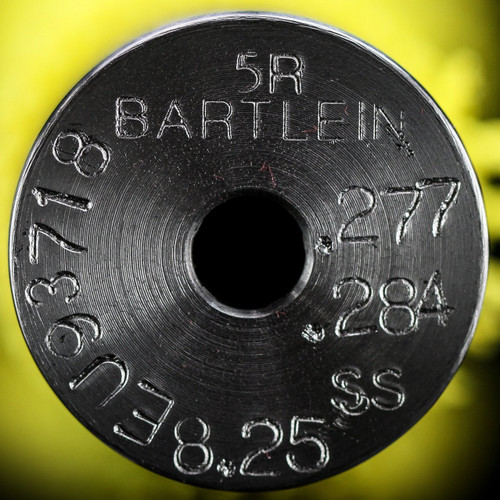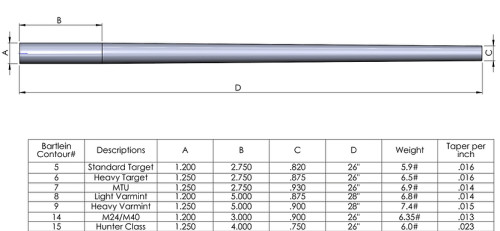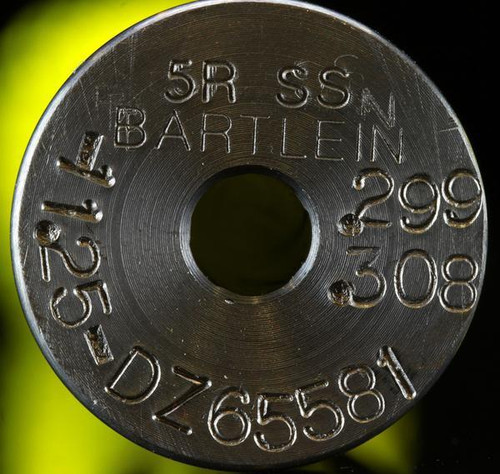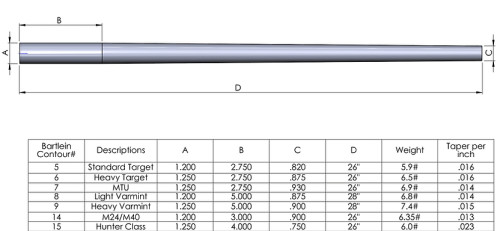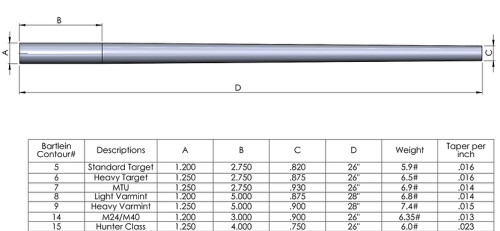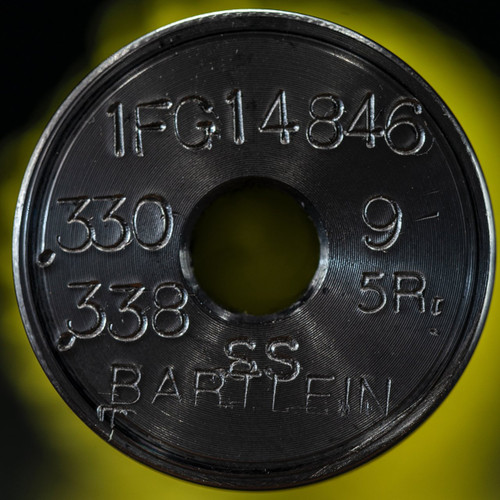Bartlein Barrels gain twist, often referred to progressive twist or transitional twist, is essentially a gradual increase in the rate of twist from the breech to the muzzle. The theorized advantages of the gain twist over standard twist are listed below the barrel specs and are as posted from the Bartlein website.
6mm Barrel Specs:
- Twist rate starts at 1:7.7" at the breech and transitions to 1:7" at the muzzle
- .237/.243 Bore/Groove Dimensions
- 4 Groove
- 27" blank (Finish length must be 26" on 27" blank due to transition of twist)
6.5mm Barrel Specs:
- Twist rate starts at 1:8.25" at the breech and transitions to 1:7.5" at the muzzle
- .256/.264 Bore/Groove Dimensions
- 5R Rifling
- 27" blank (Finish length must be 26" on a 27" blank due to transition of twist)
30 Cal Barrel Specs:
- Twist rate starts at 9.25" at the breech and transitions to 1:8.5" at the muzzle
- .300/.308 Bore/Groove Dimensions
- 5R Rifling
- 27" Blank (Finish length must be 26" on a 27" blank due to transition of twist)
Per the Bartlein Barrels website:
I’ll quote what Pope (Pope was one of the greatest barrel makers from a bygone era. His barrels along with Schalk who he learned from and gives credit to and Schoyen, and Zischang made barrels for the Schutzenfest type of guns/shooting in the late 1800’s to early 1900’s) said around a 100 years ago first. “The advantages of the gain twists are three. 1st The twist being less at the breech, gives less friction to the bullet; it therefore starts easier and quicker, giving the powder less time to burn on in front of the chamber, which therefore fouls less than in a barrel of uniform twist at the same necessary muzzle pitch (twist). 2ndThe slight change in angle of the rifling, in connection with choke bore (lapping choke bore of the barrel), effectually shuts off any gas escape of gas and prevents gas cutting, which is another case of imperfect delivery. 3rd It holds a muzzle loaded bullet in position much better than a uniform twist….
Now I will add some more to this. First off I feel this applies more to a lead bullet shooter than a jacketed bullet shooter but some of the why’s and why not’s do overlap. With a gain twist barrel the bullet cannot go to sleep. The rifling is always putting a fresh bite on the bullet as it goes down the bore of the barrel. This is why I always go back to a cut barrel being better than a button barrel. A cut barrel even with a straight twist is more uniform and consistent than a button barrel. With button rifling the button can hit a hard spot/soft spot in the steel and it will slow the button down. The button could speed back up and do the twist it’s suppose to be doing but either way you end up with a non uniform twist and it the twist keeps getting slower towards the muzzle. These two things are a accuracy killers and lead to consistency problems/fliers etc… I feel even a slight gain twist will help accuracy wise and not hurt a jacketed bullet shooter as well. For the most part I would say there is no velocity gain in a gain twist barrel with the same load. What has been conveyed to us and it goes back to Popes 1st point is that shooters have noticed that they can run a slightly heavier powder charge vs. a shooter with a straight twist barrel. As the bullet is starting easier into the rifling my only guess is the pressure isn’t spiking as fast or is delaying the pressure curve. Hence forth they can get more velocity out of the gain twist barrel. I feel pressure is pressure and that the twist doesn’t have anything to do with pressure for the most part but my only guess is that the gain twist like I said earlier is delaying the pressure curve. So you don’t see problems as early like hard bolt lift etc… Also it’s noted that even now a days our military in some 20mm and the 30mm barrels like on the A10 Warthog ground attack aircraft have gain twist type rifling in the barrels.
1 Review
-
Bartlein Left Hand Gain Twist Barrel
I love it.It shoots great.Ive wanted to try the left hand gain twist for many years. It was worth the wait for sure.

